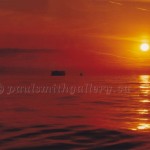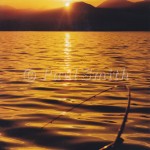 With summer just around the corner you may find yourself with the urge to capture some magnificent sunsets in your area. Sunsets can be unbelievable with ranges in color intensity that will blow you away. Over the years I’ve taken a good number of sunset shots with different cameras, starting with my old Olympus OM1 (which I still own) and progressing to the digital arena with a Nikon Coolpix 800, Sony DSC-H9 and finally my new camera a Nikon D7100. All of them took great photos for their capabilities but the real beauty is in the eye of the beholder for sure. If like me you have purchased a newer digital camera in the medium to high range, then you’ve also noticed that there are many bells and whistles to learn before you take off to shoot sunsets or anything else for that matter.
With summer just around the corner you may find yourself with the urge to capture some magnificent sunsets in your area. Sunsets can be unbelievable with ranges in color intensity that will blow you away. Over the years I’ve taken a good number of sunset shots with different cameras, starting with my old Olympus OM1 (which I still own) and progressing to the digital arena with a Nikon Coolpix 800, Sony DSC-H9 and finally my new camera a Nikon D7100. All of them took great photos for their capabilities but the real beauty is in the eye of the beholder for sure. If like me you have purchased a newer digital camera in the medium to high range, then you’ve also noticed that there are many bells and whistles to learn before you take off to shoot sunsets or anything else for that matter.
Never assume your camera will see the light and colors as you do. There are some simple guidelines to help you make the right exposure and I’ll touch on them in this article. If you can, plan your shoot by knowing the sunset time in your area and go at least an hour or more earlier to get set up. This time of the day the light will be changing by the second so it’s crucial to be prepared to get a wide range of photos expressing the changes in light intensity. It won’t take long to fill your memory card so take an extra one of those and a battery along also.
 When you are driving down the road or out in the boat and come across a beautiful sunset that catches your eye and don’t have much time to capture it, then a monopod and vibration reduction lens are your friends. Especially on a boat where the movement of the water even at its calmest can blur your image. One trick I used when I didn’t remember to pack my monopod was to rely on another person or object to lean on for stability. If all else fails then try to sit down and place your elbows on your knees to steady the shot.
When you are driving down the road or out in the boat and come across a beautiful sunset that catches your eye and don’t have much time to capture it, then a monopod and vibration reduction lens are your friends. Especially on a boat where the movement of the water even at its calmest can blur your image. One trick I used when I didn’t remember to pack my monopod was to rely on another person or object to lean on for stability. If all else fails then try to sit down and place your elbows on your knees to steady the shot.
If time permits think about what you want out of the picture as a lot of things in the foreground can enhance your image. Things like boats, buildings, lakes, oceans or trees make a normal everyday sunset shot into the photo of a lifetime. Your choice of focal length for example, can take those foreground objects and silhouette them against the sky. Remember not all sunset photos require a wide angle to capture the perfect shot. Sometimes using a longer length will provide a much better composition and effect.
Unless I am shooting without the use of a tripod or monopod I like to disable the auto ISO feature also. This allows for more control over the quality of the image without worrying about pixel noise. Remember in the not so distant old days when shooting with 400 ASA film would produce a grainier image when enlarged, well in digital format it is called pixel noise.
Always set your camera to shoot at the highest quality it will allow and even better if you have a “raw” setting. This will ensure a higher resolution for printing or re-touching later on. Even if you’re wanting to place the photo on your blog or website you can always use a photo editor like Photoshop to compress the image to reduce its size.
 Turn off the auto white balance setting also and use the direct sunlight white balance choice for better better colors or even try the cloudy setting which will give you warmer colors. If your camera offers a vivid choice for the picture format, then choose it over the standard one for a much more intense image. Remember that the lower in the sky the sun is, the better the photo will reflect the natural colors and not as bright if it were higher in the horizon. The lower the sun is positioned in the horizon will also dictate whether to use matrix or center weighted metering. Center weighted metering is best for lower sun positions to capture the important colors in the sky.
Turn off the auto white balance setting also and use the direct sunlight white balance choice for better better colors or even try the cloudy setting which will give you warmer colors. If your camera offers a vivid choice for the picture format, then choose it over the standard one for a much more intense image. Remember that the lower in the sky the sun is, the better the photo will reflect the natural colors and not as bright if it were higher in the horizon. The lower the sun is positioned in the horizon will also dictate whether to use matrix or center weighted metering. Center weighted metering is best for lower sun positions to capture the important colors in the sky.
If you want to improve your exposure balance between the foreground and sky use a Neutral Density (ND) filter. When shooting sunsets around moving water like ocean beaches, rivers or streams this will add a creamy effect to the water at slower shutter speeds which is what you should be shooting at anyways.
 Last but not least, I sometimes will use an orange filter over my lense to influence the sunrise when it isn’t as vibrant as I want it to be for whatever reason. If you don’t have an orange filter, driving sunglasses will also work as long as they have an orange tint. Just hold them in front of your camera lense and make sure their frame isn’t present in your view. The shot to the left was taken with an orange filter while out fishing one summer morning with the help of some fog. Notice the focal length.
Last but not least, I sometimes will use an orange filter over my lense to influence the sunrise when it isn’t as vibrant as I want it to be for whatever reason. If you don’t have an orange filter, driving sunglasses will also work as long as they have an orange tint. Just hold them in front of your camera lense and make sure their frame isn’t present in your view. The shot to the left was taken with an orange filter while out fishing one summer morning with the help of some fog. Notice the focal length.
Bye for now and enjoy your camera!
